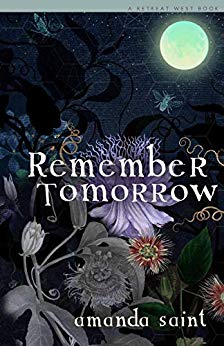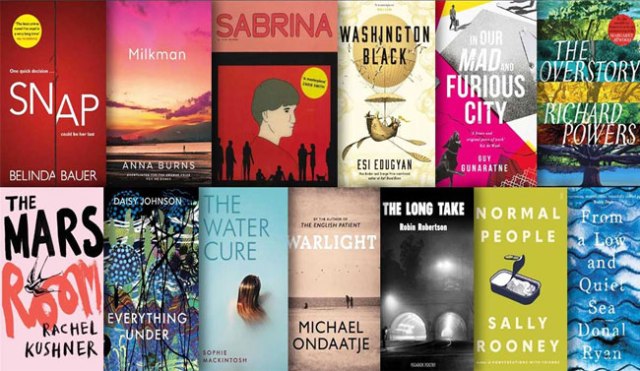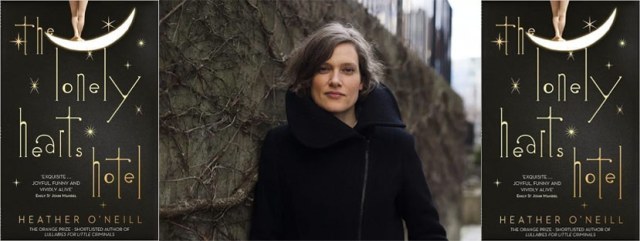A Thousand Paper Birds is her first novel and is an intimate portrait of five inextricably linked lives, spanning one calendar year at Kew Gardens. After the sudden death of his wife, Audrey, Jonah sits on a bench in Kew Gardens, trying to reassemble the shattered pieces of his life. Chloe, shaven-headed and abrasive, finds solace in the origami she meticulously folds. But when she meets Jonah, her carefully constructed defences threaten to fall. Milly, a child quick to laugh, freely roams Kew, finding beauty everywhere she goes. But where is her mother and where does she go when the gardens are closed? Harry’s purpose is to save plants from extinction. Quiet and enigmatic, he longs for something – or someone – who will root him more firmly to the earth. Audrey links these strangers together. As the mystery of her death unravels, the characters journey through the seasons to learn that stories, like paper, can be refolded and reformed. Haunted by songs and origami birds, this novel is a love letter to a garden and a hymn to lost things.
The Interview
A Thousand Paper Birds is your first novel but with your career in dance and theatre, I wonder if perhaps storytelling is in your blood?
I think ‘creating experiences’ is in my blood. Capturing a mood, a glance, a moment. Having come from a dance background, which is all about communicating a feeling, the things unsaid, the push-pull of an encounter, I had to work hard to move away from a series of images and sensations to something with more narrative drive. I could, however, fall back on my theatre years to explore character motivations, the importance of an arc. I think, primarily, it is imagination that has been my fuel and anchor. Imagining different worlds, the infinite possibilities. Trying to make the familiar unfamiliar.
How long has this story lived with you?
It started in 2003 when I first moved to Kew and began jotting down notes about the Gardens. I was working on a different novel at the time so didn’t take much notice. Over the years, different threads began to form – including origami and the question, ‘Who is Harry Barclay?’. I was always struck by the abundance of life in Kew in juxtaposition with the commemorative benches. All those dead people who had ‘loved spending time in this garden’ only made me more aware of the beauty of the place and how fleeting the moment. This rub of death and life began to fascinate me. I started writing the novel in 2009 and it took six years and eight drafts before it reached Bloomsbury.
Loss and grief are central themes of the story, and your writing doesn’t shy away from the sensitive subjects of suicide and miscarriage. There’s a beautiful line where Jonah feels he ‘is clutching a newborn child, holding the exact weight of hope in his arms.’ Were you conscious of speaking about grief that is often kept hidden?
Yes. I suffered recurrent miscarriages between my first and second child, so I felt qualified to explore this difficult and often unspoken subject. Grief for an unborn child is real and yet intangible. I’m always interested in exploring the things that are in the mist, that you can only see the vague shape of – perhaps an outline here or there, the rest erased, amorphous. So I wanted to see if I could bring that yearning into being.
A close friend committed suicide when we were in our late twenties. It’s one of those things that leaves its mark on you and it turned up in my writing, unbidden. I think many of us have had some whimsical notion of suicide at some point – but I think there’s a huge chasm between thinking it and doing it. I’m really interested in what that is. The space between.
I have also witnessed friends die of terminal illness – and I’m interested in the grief of a dying person. I remember a day when there was a sudden downpour – a proper, constant dousing – and my neighbour, who knew he didn’t have long, walked out of his house with his umbrella and stood in the middle of the road just taking it all in. How do you say goodbye to that last rainfall? I think one thing the book tries to do is stretch that final moment. If I could press pause between my penultimate heartbeat and my last, what would my thoughts be?
The book remains hopeful, the idea of redemption ever-present – perhaps because the setting at Kew Gardens is so beautiful. Did you always know you wanted to set A Thousand Paper Birds there?
Yes. Kew always came first. I was living in a bedsit near the Gardens with only two windows that were so high I couldn’t see out of them. So if I had writing time, I would take myself off to Kew and set up my ‘office’ – which was always one particular bench by the lake. Eventually this became Audrey’s bench. If the weather was dreadful, I would seek refuge in the Palm House and perch on the hot pipes, surrounded by banana trees and palms. In later drafts, I would write in different locations depending on which character’s storyline I was working on; each character has a particular place that resonates.
The rhythm of the book was another source of joy for me; could you tell us a little about the structure and timespan the book is set over?
As a dancer, rhythm is vital to me: the rhythm of the sentences, the words, the chapter. It is important to me where the comma is, the dash. It’s Fred Astaire in a graceful spin, his arms wheeling, then a pause – oh, how important the pause is – before he stamps, shuffles, stamps again. Writing IS a dance.
As for the structure, I was weaving two timelines and five character perspectives. At first I worked in narrative order, then in deeper drafts I took the thread of just one or two characters and worked them from beginning to end, just polishing that particular arc. Then in the next draft I would braid them together again, checking the juxtapositions, the pace … and yes, most importantly, the rhythm.
Kew felt like a character in its own right, as did the origami cranes Chloe creates almost compulsively. What are your thoughts about the therapeutic properties of art and nature?
Both art and nature are sustenance to me. At an early age, I learnt from Frances Hodgson Burnett’s The Secret Garden that nature has the power to transform. We enter a garden, and if we let it enter us, we leave changed. Ditto for woods, oceans, mountains – even a daisy in the crack of a pavement. It can totally shift my day.
The same is true with art. Many books have saved me. Music has lifted and consoled me. I have stood in front of a particular painting for hours, unable to leave. Often I don’t know why – just that it is making my soul itch. Dance has a profound impact. It touches on things we have no words for. It always breaks me and makes me bigger.
Fusing these two themes, I was interested in how humans strive to create and yet are systematically destroying the most creative thing of all: nature. Harry’s job is to save species from extinction. I’m dumbfounded by the vast variety of Kew’s flora. It’s enough to make you believe in a vast, divine imagination – but perhaps that creativity is coming from the seed itself, the atom. I’m curious about the urge to create that is in every living thing – the bud pushing through the soil, the ambition of a tree to birth an apple. In all of us there’s a striving to create, to be the fullest we can be.
I’ve been inspired to try and learn how to make paper birds by your book; are you a dab hand at origami yourself?
Sadly, no. I can do a few birds well. A couple of boxes. But it’s not necessarily about a big repertoire of models, but repeating the same bird again and again. There’s something very meditative about the process. But beyond my dabbling, there’s a whole world out there of origami masters making the most extraordinary things. Scientists use origami to solve mathematical equations. Leonardo Da Vinci, Houdini – many of the big thinkers have been enthralled by its mysteries and symmetries.
I love how many things can be created from a single square. How often can I unfold and refold the paper, changing it from a bird to a boat, a kimono, before the paper frays or tears? This was a metaphor for the writing process: how far can I push the form, fold in the different perspectives, and, particularly, how much can I crease the genres before something rips?
One of the best things about the book coming out is people telling me stories about origami birds being scattered in bookshops, left on trains, stranded at bus stops. People are picking up litter – a ticket, a chewing gum wrapper – and folding it into a gift for the next stranger … and the next. It’s a tiny act of resistance that says, despite everything, I still believe in beauty, in small gestures of kindness. A Chinese whisper.
As a destroyer of books myself, one of my favourite scenes is that between Harry and Audrey where they talk about books bearing the imprint of their readers – corners turned, pages smudged, words underlined. Are you a careful or careless handler of books?
When I was a child, Roald Dahl signed a book for me. My copy had felt tip drawings in the margins, silly faces, doodles. He was charmed by it, saying the book had been well-loved, well lived-in. I won’t fold corners to mark my place – partly because I love matching books with bookmarks, but I will turn down pages to flag a favourite phrase. I underline often. I even scribble in the margins. Perhaps something I’ve read has set off a new thought about my characters, or a scene, so I’ll just begin to riff. It becomes a dialogue.
I particularly love holiday books. The ones that come back double the thickness because they’re bloated with sea water – or perhaps there’s sand in the seams, or an unspecified flower pressed between the pages. There may be dirt from a rickshaw. A squashed bug. My holiday has become part of the book – its story.
Some people might judge it as careless. But I believe the biggest compliment I can give a writer is to show them my copy of their book, all the corners turned, sentences underlined. Look. This is how much I loved this. This is how much I lived it. This is how much I cared.










